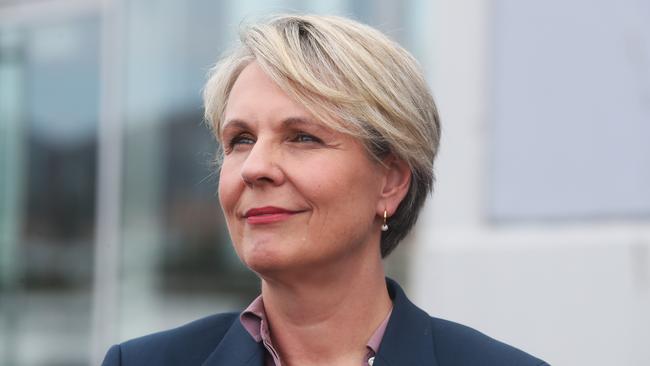The circular economy could be an economic boon, but Australia is lagging in its efforts to date
Australia can add $26bn to the economy over the next decade if it embraces circular economy principles, but there’s still plenty of work to do.

Business
Don't miss out on the headlines from Business. Followed categories will be added to My News.
Australia can add $26bn to the economy over the next decade while diverting 26 million tonnes of waste from landfill each year by doubling its “circularity”, a new initiative launched on Wednesday says.
Minister for the Environment and Water Tanya Plibersek has unveiled a Circular Economy Framework, which aims to significantly boost the reuse, repair and recycling of materials in a bid to cut down on waste and reduce the impact on the environment.
Modelling by the CSIRO indicates that doubling the nation’s circularity can boost gross domestic product by $26bn over 10 years, and reduce greenhouse gas emissions by 14 per cent.
The government has set three targets in a bid to achieve the ambition to double circularity, which are: shrinking our material footprint by 10 per cent; lifting material productivity by 30 per cent, and; recovering 80 per cent of resources.
The CSIRO estimates that Australia’s circularity rate is currently about 4.6 per cent, which represents the proportion of materials that Australians use that do not come from virgin sources. This trails the global average of about 7 per cent.
The Circular Advantage, the final report of the Circular Economy Ministerial Advisory Group, released earlier this month, recommends the introduction of the framework, and also recommends enshrining its objectives in legislation via a Circular Economy Act.
This would ideally include a clear framework for design rules for products, such as exists in the European Union, and a regulatory structure for product stewardship, “that provides an enhanced focus on mandatory participation’’ the report says.

The government has committed to developing a product stewardship program for solar photovoltaic panels, and ended consultation on that mid-last year, but is yet to introduce or outline a stewardship scheme.
The report also recommends the introduction of a new governance model which would harmonise circular economy rules across the states, and use public procurement to drive the uptake of circular goods in the economy.
“Australia is not starting from zero,’’ the framework released on Wednesday says.
“Several of Australia’s largest investment instruments are already supporting the circular economy - including the $15bn National Reconstruction Fund, and the $7bn Northern Australia Infrastructure Facility. Australia’s Ending Plastic Waste Mission, National Waste Policy and Water and Energy Efficiency Labelling schemes are all well-established programs supporting the circular economy.
“States and territories also have a range of supporting programs.’’
Circular Economy Ministerial Advisory Group chair Professor John Thwaites said Australia had lagged behind much of the world in this arena.
“We use more and waste more than most other countries like us. The circular economy is an opportunity to turn this around to reduce waste, to reduce emissions and provide new economic opportunities,’’ he said.
“The report features 14 core recommendations to the Australian government to support Australia’s transition to a circular economy.
“It is critical because we haven’t had the policies in Australia in the past. We need a national circular economy framework and legislation to underpin the circular economy.
“The government needs to set the policies that will drive a circular economy and build a circular economy market. Businesses needs to seize the opportunity of the circular economy which will reduce waste and emissions but also provide economic opportunities.’’
Ms Plibersek said the framework sets ambitious but achievable targets.
“Our government has already embedded the circular economy in over 30 programs and policies, representing $150bn of government investment, and we’ve delivered Australia’s first ever Environmentally Sustainable Procurement Policy,’’ she said.
“I’m particularly excited about the economic opportunities of a circular economy.
“The simple fact is we don’t get enough value out of the raw materials that we use in this country and it’s a tragedy that so much of it ends up in landfill.’’
Sydney-based company Sircel, led by chief executive Anthony Karam, says it has pioneered a sustainable e-waste recycling solution, built on the back of tens of millions of dollars invested in research and development and equipment, which it delivers across its six sites in the eastern states.
Mr Karam said it was encouraging that the circularity message was being promoted at the highest level and would increasingly be reflected in legislation and procurement, but said there needed to be a move towards mandatory schemes.
“Ultimately that’s exactly where we need to land,’’ he said.
“Sometimes things need to be mandated for them to be integrated into action and behaviours.’’
Mr Karam said there was a clear desire from consumers for more circularity to be integrated into the economy, with large companies beginning to recognise there were risks to their brand and cost implications from not building sustainability into their processes.
Originally published as The circular economy could be an economic boon, but Australia is lagging in its efforts to date



